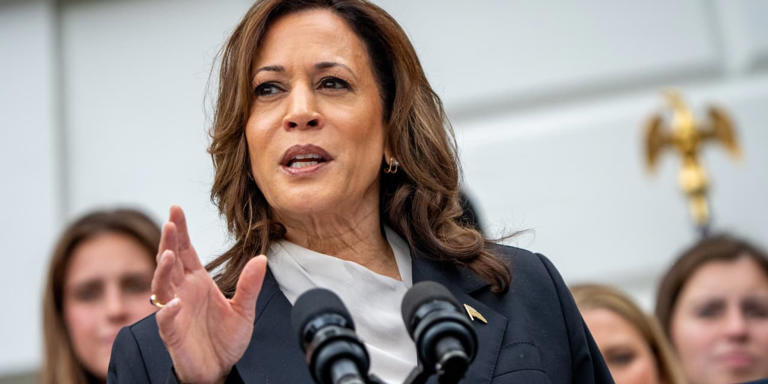President Joe Biden’s recent announcement that he will not seek a second term has fundamentally altered the dynamics of the 2024 presidential race, injecting a new layer of uncertainty into the financial markets. Despite the immediate effect of Biden’s decision not being starkly visible in market performance, this could change significantly as the campaign progresses, especially as the fall election season approaches and key indicators start to emerge.
Currently, the absence of a clear frontrunner from the Democratic side has created a vacuum that could lead to heightened market volatility. Wall Street is closely monitoring polling data from crucial swing states, including Pennsylvania, Ohio, Michigan, and Florida. These states are pivotal in determining the outcome of the election, and their polling results will likely become a major focus for investors as Election Day approaches. If no dominant candidate surfaces, or if the polling remains within a narrow margin, the uncertainty could further influence market behavior and potentially lead to increased volatility.
For now, investors are primarily focused on other key factors driving the market, including earnings reports, economic data, and the possibility of multiple Federal Reserve interest-rate cuts. These elements have been dominating market discussions and will likely continue to be the primary drivers of stock performance throughout the summer. According to Mark Malek, Chief Investment Officer at Siebert Financial, the market should brace for increased volatility if polling results continue to show tight races. Malek suggests that investors prepare for a turbulent period, likening the situation to a “bumpy ride.”
Before Biden’s withdrawal, polls had indicated a competitive race between Biden and former President Donald Trump. However, recent developments have shifted the dynamics. Biden’s less-than-stellar performance in recent debates and a serious incident involving Trump—an assassination attempt on July 13—have impacted the race. Consequently, Trump has seen his lead expand, complicating the electoral landscape further.
In light of Biden’s decision, Vice President Kamala Harris has emerged as the leading candidate for the Democratic nomination. This development represents a significant shift and a potential “reset” in the race, according to strategists at UBS Group and J.P. Morgan. As Harris’s candidacy gains momentum, investors are faced with the task of understanding how her policy positions and potential vice-presidential picks could affect the market. Even though Harris is anticipated to secure the nomination easily—bolstered by endorsements from Biden and influential Democratic leaders such as Nancy Pelosi—there are still unanswered questions about her policy platform and how it might diverge from Biden’s.
Another significant factor is the potential for a “red wave” in the November elections, where Trump could regain the presidency and Republicans could take control of both houses of Congress. While some analysts believe that Biden’s exit may reduce the likelihood of this scenario, the full impact remains uncertain. If a red wave does materialize, it could lead to significant policy shifts, including potential tax cuts and deregulation under a Trump administration. These changes might benefit certain sectors of the economy but could also raise concerns about inflation and budget deficits.
The anticipated effects of a Trump administration on different sectors are complex. Policies that revitalize inflationary pressures could lead to higher Treasury yields, historically known to negatively affect stock prices. Conversely, corporate tax cuts and deregulation could boost corporate profits, presenting both risks and opportunities for investors. The so-called Trump trade has already influenced market behavior, driving up stocks in sectors such as oil and gas, private prisons, financial services, and cryptocurrencies, while negatively impacting retailers dependent on cheap imports and clean energy stocks.
Despite these uncertainties, the broader market has demonstrated resilience. On the day of Biden’s announcement, major indices showed positive movement: the S&P 500 climbed 1.1% to 5,564.41, the Nasdaq Composite increased by 1.6% to 18,007.57, and the Dow Jones Industrial Average rose by 0.3% to 40,415.44. While some stocks related to the Trump trade experienced declines, the overall market trend indicated a recovery, with minimal changes in the Treasury yield curve.
As the election draws closer and more data becomes available, the full implications of Biden’s decision and the evolving political landscape will become clearer. For now, investors are navigating a complex environment where political shifts and economic factors are intricately intertwined.
